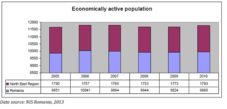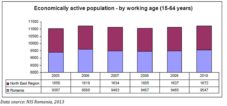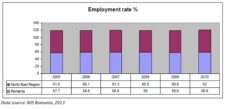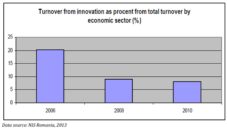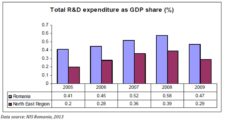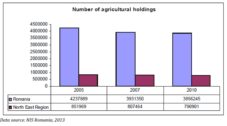Introduction
The sustainable development covers at least three factors: economic, socio-cultural and environmental. They have been divided in literature (2005) between what is to be sustained: nature, life support, community, and what is to be developed: people, economy and society.
The notion of sustainable development (1987) is seen in relation with the futures generations, as “development that meets the needs of the present generation without compromising the ability of future generation to meet their own needs”.
Moving towards sustainability is a complex process in which targets should be clearly defined and the actions should be sustained by all stakeholders that wish to contribute or have various interested in an area of development. Sustainable development can only be achieved by economically, socially and environmentally sustainable actions integrated by a sustainable management that cover all these aspects. Even if most of people can relate these actions only with measures that reduce their own level of poverty, other aspects regarding preservation of natural resources, protection of ecosystems are also major challenges for human future.
Some directions towards sustainable development are indicated by Chai Ning and Dong Hoon (2011) who consider that sustainable development has become the theme of today’s world in different fields, and some renewable resources as tourism, should be continuously developed and utilized to contribute to the sustainable development. In the view of Berke PR (2002) the sustainable development can be reached by a balance among the three ‘E’s: environment, economy and equity.
The targets of sustainability need to be adapted in relation with the specific characteristics of each region of development. In the European Union regional disparities appeared after each enlargement but regional policies budget was considerable in the last decades, and covered convergence, competitiveness and employment targets.
The European Union policy established new targets for the year 2020 [5] and most of them are directly related with sustainable development in terms of promoting a more resource efficient, greener and more competitive economy
Material and Method
The paper is based on Sustainable Development Indicators used to monitor The European Union Sustainable Development Strategy, in relation with socio-economic development, sustainable production, demographic changes and social inclusion. The data are provided by Eurostat, National Institute of Statistic Romania, and have been statistically processed and interpreted.
Results and Discussions
First we analyzed the key factors of social sustainable development in the North East Region, under aspects of demographic changes. In 2012 the population of North East Region of Development represented 17.3% of national population.
The most populated county of the region was Iasi, the former capital of Romania between 1916 and 1918. The population of the North East region was concentrated mostly in the rural areas, representing 56 % of total population. Among the region’s counties, Neamţ County population is mostly located in the rural areas, while Iasi County is the county with the highest rate of urbanization. From 1990 to 2012 the total population of the region decreased by 2.2 %, from 3.78 millions to 3.7 millions, but this was bellow national decrease which was by 8 % per total and by 12 % in rural areas. From demographic point of view, sustainable development can be affected by aspects as accentuated aging of the rural population and migratory movement of population, low life expectancy in urban and rural areas of the region and negative natural growth rate of the North-East Region of Development. This last indicator was -0.9 ‰ in 2009 and experienced higher negative values in prior years.
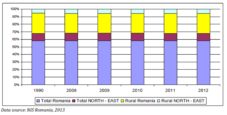
Fig.1: Demographic changes between 1990 and 2012 in The North East Region of Development, comparative with Romania, Data source: NIS Romania, 2014
Labors resources in the North-East Region of Development cumulated in 2010, more than 2300 thousand persons, from which 52 % were male and 48% female.
The indicator economically active population shows a decrease between 2005 and 2010 in the North East Region comparative with national level, from 18.1 % to 17.9 %, but in absolute terms there is an increase of region level, which means that if this trend will continue in the next years, there will be no shortage of labor supply for the production of economic in the region.
Fig.2: Economically active population trends in the North East Region comparative with Romania between 2005 and 2012 (thousands peoples), Data source: NIS Romania, 2014
The evolution of economically active population by working age in the North East Region of Development, comparative with Romania indicates the same ration of 17.5 % in 2005 and 2012 that can be associated with stability.
Fig.3: Evolution of economically active population by working age in The North East Region of Development, comparative with Romania (15-64 years) between 2005 and 2012 (thousands people)
The employment target for the EU in 2020 is that 75 % of the 20-64 years olds to be employed.
The indicator employment rate recorded in 2010 the highest level of employment in the North East Region of Development, between 2005 and 2012, but we can conclude that employment rate is far way from EU targets.
Fig.4: Employment rate evolution in the North East Region comparative with Romania between 2005 and 2012 (%)
The level of average monthly nominal gross earning indicates why the North East Region of Development is considered one of the poorest regions of development in Romania. The population wages are situated well bellow national average.
Fig.5: Average monthly nominal gross earning level in the North East Region comparative with Romania between 2005 and 2012 (lei)
In 2009 the GDP per inhabitant reached the highest period between 2005 and 2012 in the North East Region Development but the average GDP per inhabitant in this period represented only 63 % from national GDP per inhabitant. This represents another indicator that revealed barriers to the region development. The industrial sector generates 1/5 of the regional gross value added and generates the most part of the regional jobs.
Fig.6: GDP level in the North East Region comparative with Romania between 2005 and 2012 (lei)
The North East Region has a developed business infrastructure, diversified and well distributed among the six countries of the region. The SMEs sector is a key indicator of a region stage of develoment, 99.7% of regional businesses being smes; the smes have the most significant role for economic growth, employment and social integration. In the North East Region of Development the role of smes in research and develoment is difficult to quantify, less then 0.4 % representing r&d expenditure.
Per total, at region level the number of active entrepreneurs in the north east region didn`t reach more than 11.1 % from national total number. In 2008 was recorded the highest number of active entrepreneurs but the largest share from total at the national level was achivied in 2005.
The most regional enterprises are active in the trade sector.
Fig.7: Number of active entrepreneurs in the North East Region comparative with Romania between 2005 and 2012
The turnover from innovation is an important indicator of sustainable development. Between 2006 and 2010 the turnover from innovation decrease in the North East Region of Development, which conclude in a low level of innovation.
Fig.8: Turnover from innovation as % of total turnover by economic sector (%) in The North East Region of Development
The share of Research and Development expenditure in the GDP indicate that the expenditure for the research sector in this region is bellow national average.
Fig. 9: Total R&D expenditure as GDP share (%) in the North East Region comparative with Romania between 2005 and 2009
Fig.10: The number of agricultural holdings in the North East region comparative with Romania between 2005 and 2012
The agriculture is one of the most important fields of activity of the North East Region. In the rural areas lives more than half of the region population. The non agricultural activities in the rural areas are insignificant, so the population incomes are directly depending on agricultural results. The North East Region has a high intake of agriculture to national GDP.
The sustainable environment development in the North East Region of development is the branch of sustainable development which is closest to the EU targets in terms of sustainable development. Between 2000 and 2010 the green spaces increased with more than 7 %. Evolution of the total emissions of greenhouse gases in the northeast region of them shows a decrease by 17% between 2006 and 2010.
In conclusion significant indicators of sustainable development show large disparities between national and region level, in terms of GDP per inhabitant and average monthly nominal gross earning. The number of entrepreneurs decreased in the last years in the context of global economic crises, and the SMEs sector didn’t produced the expected economic growth. The R&D activities are bellow national and EU targets.
But the region is well situated comparative with national level in terms of employment rate and trend of economically active population, and environment indicators.
Acknowledgment
The results are part of the Project “Research On Actual Size Evaluation And The Perspective Of Sustainable Rural Development Through The Elaboration Of SWOT Analysis, As Method Of Strategic Planning For The North-East Region Of Romania”, under a financial scheme supported by Romanian National Council for Scientific Research in Higher Education: CNCSIS-UEFISCSU (Grant no 114/28.07.2010), Project manager: Silviu BECIU
References
- Berke P.R., (2002), Does sustainable development offer a new direction for planning? challanges for the twenty-first century. Journal of Planning Literature, Vol 17(1), Pag. 21-36.
Google Scholar
2. European Commission, Europe 2020, (2010), A European strategy for smart, sustainable and inclusive growth
3. Kates, R., Parris T. and Leiserowitz A., (2005), What is sustainable development? Goals, Indicators, Values and Practices; Environment: Science and Policy for Sustainable Development, Vol 47, No 3, pages 8-21
Google Scholar
4. Ning C., Hoon D., (2011), Sustainable development strategy of tourism resources offered by regional advantage: Exploring the fesability of developping an “exotic culture” resource for Weihai City of China,
Google Scholar
5. Procedia engineering, 21, Pag. 543-552
6. North East Region Development Agency, (2014), Regional studies
7. World Commission on Environment and Development, (1987), Our common future, Oxford, UK, Oxford University Press




